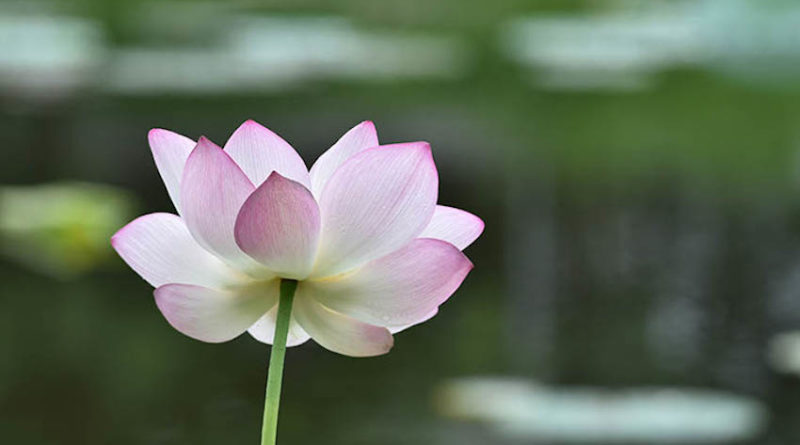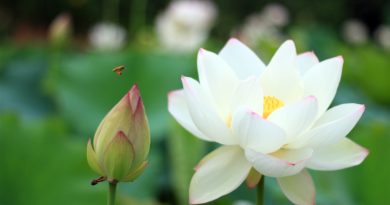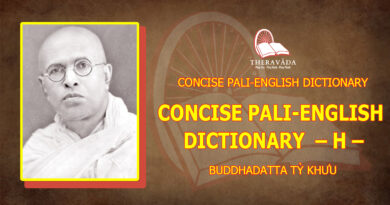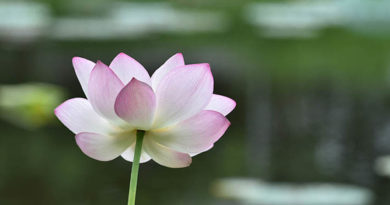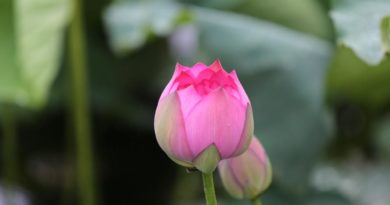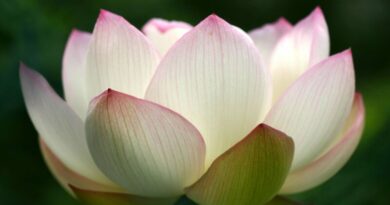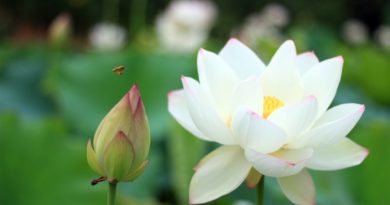A FISTFUL OF SAND – QUESTIONS & ANSWERS
A FISTFUL OF SAND
QUESTIONS & ANSWERS
Question: I understand that Tibetan monks use visualization when they meditate. Have you ever used visualization in your meditation?
Ajaan Suwat: Visualization of what?
Question: I’m not really sure. Maybe of the unattractiveness of the body?
Ajaan Suwat: Visualization, if it’s done in the proper way, can be useful. If it’s done in the wrong way, it can lead to delusion. The process of visualization, in the language of the Dhamma, is called sankhara, or fabrication. The Buddha taught us to be wise to the true nature of fabrication, that it’s inconstant and undependable. When we know this truth, we don’t get attached to the things that arise. When knowledge arises and we don’t get attached to it, then we don’t get deluded by it. That’s when it can be useful.
One of the principles of the Dhamma is that if you visualize anything in your meditation, you should visualize only things lying within you, so that you see physical fabrication in the body and mental fabrication in the mind in line with their true nature. For example: at present you’re not yet old, but you’re taught to visualize yourself as growing old in the same way you’ve seen other people grow old. Remind yourself that as the years pass, you’ll have to age in just the same way. Aging is stressful. Your eyes won’t be able to see as clearly as when you were young. Your ears won’t be able to hear in the same way as when you were young. It’ll be painful to sit down, to stand, to walk. There will be all kinds of obstacles. So now, before you grow old, you should accelerate your efforts at developing goodness so that it will be a refuge for the heart when old age comes. In other words, accelerate your efforts at practicing the Dhamma and training the mind to find peace.
One of the Ten Recollections (anussati) taught by the Buddha is recollection of death: When you see other people dying, other animals dying, you should reflect on the fact that you will have to die just like everyone else. Repeat the word maranam, maranam (death, death) in the mind and look at yourself: you’re going to have to die for sure. As you reflect maranam, maranam, it may happen that as your mind grows still, a vision of your own death will appear within you. If your mindfulness is good and you have your wits about you, then the more clearly you see death in this way, the more the mind will grow still with an even greater sense of well being. As you watch death clearly, seeing the body decay, concentration grows even stronger. If you visualize death so that you can see it clearly, you’ll realize that there’s nothing to be gained by growing attached to the body. When you see the truth in this way, you’ll see that your past greed for things served no real purpose. The anger you’ve felt in the past: what purpose did it serve? You’ll see that greed, anger, and delusion are stressful and serve no purpose — for ultimately, we’ll have to let go of everything that comes along with them. You’ll see that this sense of peace and ease in the mind is what serves a real purpose. When the mind is at peace in this way, it doesn’t want anything else. All it wants is peace, and that’s enough.
I’ll tell you a story. It’s time you listened to something light for a change, so that you won’t be so tense and grim. It’s important that you first let yourself relax. Once Ajaan Funn, my teacher, was wandering through the forest in Baan Phyy district, Udorn Thani province, and stopped to spend the night not far from a certain village. He saw that it was a congenial place and so stayed on there to practice meditation. A woman living in the village would often come in the morning to give him alms, and then again in the evening to hear his Dhamma talks. Ajaan Funn taught her to meditate, something she had never done before. It so happened that she was afraid of ghosts. Wherever she went, she was afraid of ghosts, and so she never went anywhere alone. Especially at night, she was really afraid. When Ajaan Funn taught her to meditate, she didn’t want to, because she was afraid that she’d see a corpse or a ghost. On following days, Ajaan Funn asked her how her meditation was going, and she couldn’t answer him because she hadn’t meditated. After a while she began to feel embarrassed: “He keeps teaching me to meditate and yet all I do is hold onto my fear of ghosts.” So she decided, “Whatever may happen, I’m going to meditate.” So she started to meditate.
At first she simply focused on repeating the word buddho as she watched her breath come in and out. As her mind began to relax, it began to drift a bit and a vision arose: she saw a corpse lying stretched out in front of her. When she saw the corpse, she began to feel afraid. Then the corpse moved in so that it was lying on her lap. With the corpse on her lap, she couldn’t get up to run away. And that’s when she remembered her buddho. She wanted buddho to come and help her. So she kept thinking, buddho, buddho, more and more intensely. As she was doing this, one part of her mind was afraid, the other part kept recollecting buddho, buddho, until the corpse disappeared from her lap and turned into herself. That was when she had a vision of her chest bursting wide open. Her heart was bright, very bright. In the brightness of her heart she could see all kinds of things. She could see what other people were thinking, what animals were thinking. She knew all kinds of things and felt really amazed. From that point on her fear of ghosts disappeared. Her heart grew peaceful and at ease.
The next day she went to see Ajaan Funn. Ajaan Funn was sick with a fever, but he forced himself to get up to greet her and give her a Dhamma talk, as he had on previous days, just as if he wasn’t sick at all. After the talk, she immediately said to him, “Than Ajaan, your heart isn’t bright and blooming at all. It looks withered and dry. You must be very sick.” Ajaan Funn was surprised: “How does she know the state of my mind?” But he had noticed that her manner was different from what it had been on previous days. She was very composed and polite. She had bowed down very politely, her words had been gentle and very respectful. When she commented on his heart that way, he wondered: “Does she really know the state of my mind?” So when she returned to the village, he forced himself to sit and meditate to the point where the fever broke and went away. His heart grew peaceful, bright, and at ease. The next day, when the time came that the woman would come, he decided to play sick in order to test her. When she arrived, he didn’t get up to greet her and stayed lying down as if he was sick. After she bowed down, she sat to meditate for a moment, and then said, “Why, your lotus” — meaning his heart — “your lotus is really blooming!” That was when Ajaan Funn realized that she was really meditating well.
From that point on, she could come in the evening without the slightest fear of ghosts or spirits. And she continued to meditate well. Her mind never deteriorated. To tell the truth, she had never studied in school and didn’t know much of the Dhamma, but because of her respect for Ajaan Funn, when he taught her to meditate she followed his instructions. Whether it was because of her past merit or what, I don’t know, but she gained peace of mind, developed her discernment, and was able to know her own heart and the hearts of other people. So those of you who have come here to meditate: don’t underestimate yourselves, thinking that you won’t gain anything or come to any insights. Don’t be so sure! If you keep up your efforts and practice correctly, it might very well happen that you’ll gain insight. If things come together properly, the day will come when you know, when you see the Dhamma. It could very well happen.
So keep up your efforts. After the retreat is over, when you go back home, keep using your mindfulness to keep watch over yourself. In your comings and goings, keep training your mindfulness as you do while you’re here, as a means of maintaining the state of your mind through practicing restraint of the senses. This will develop your mindfulness and give it power. That way, you’ll find that things go more smoothly when the time comes to train the mind to be still.
Are there any other questions?
Question: I’m finding that my mind is beginning to settle down somewhat in my meditation, and I’m surprised at the sense of comfort and ease that comes when it does settle down.
Ajaan Suwat: A sense of ease arises when there’s peace and calm. Stress and suffering arise when there’s no peace and calm. These things always go together. You can observe in yourself that whenever the mind isn’t at peace, when there’s a lot of disturbance and turmoil, there’s a lot of stress and suffering as well. When there’s only a little disturbance, there’s only a little stress and suffering. When there’s a lot of peace, there’s a lot of ease. If you’re observant, you’ll notice that wherever there’s peace, there’s also a sense of comfort and ease.
You can compare it to a nation at peace, with no war, no strife, no conflicts, no crime. That nation will have the sense of ease that comes with being at peace. If a family lives in harmony, with no quarreling, that family will have the sense of ease that comes with being at peace. If the body is free from disease, strong enough to be used for whatever work you want to do, it’s called a body at peace, and has the sense of ease that comes with being at peace. If the mind isn’t disturbed by the defilements that would put it into a turmoil, it’s at peace in line with its nature. Even nibbana is peace — a peace that lasts and can never be disturbed. That’s why nibbana is the ultimate ease.
Question: When I meditate and see the changes in my body and mind, there seems to one part of the mind that’s simply the observer, which doesn’t change along with the things it watches. When I catch sight of this observer, this sense of awareness, what should I do next?
Ajaan Suwat: One part of the mind is fabrication. As for this sense of awareness itself, this is very important. We should try to know fabrications in line with their true nature. These things are inconstant, and so we should know their inconstancy. These things change and grow. When they appear, we should know that they’re appearing. When they disappear, we should know that they’re disappearing. When we know the appearing and disappearing of fabrications, we’ll realize: Before we didn’t understand fabrications, which was why we felt desire for them. We thought they would make us happy. But fabrications are inconstant. They arise and change in this way and so serve no real purpose at all. We’ve struggled to acquire them for a long, long time, but have never gained enough happiness from them to satisfy our wants. But when we train the mind so that our sense of awareness knows in this way, we gain a sense of peace, happiness, satisfaction. This sense of happiness doesn’t involve any struggle, doesn’t depend on anyone else at all. When we experience this sense of peace and ease, we’ll gain discernment and insight. We’ll see the sense of peace and ease coming when our discernment is wise to the nature of fabrications and can cleanse the mind so that it feels no greed for fabrications. The mind then becomes clean and pure.
Question: Is this sense of awareness the self? Here we’re taught that there is no self, and so I’m confused.
Ajaan Suwat: Don’t be in a hurry to label this sense of awareness self or not-self. The discernment that makes us aware of every aspect of fabrication will tell us on its own in line with the truth. It’s the same as when you fix food. As you’re fixing it, don’t ask what the taste is like or where it resides. At that moment you can’t tell where the taste is. But once you’ve fixed it and eaten it, you’ll know the taste and where it lies. In the same way, this issue of self and not-self is very refined. When you’ve practiced until you’ve reached that level, it’ll be clear to you in the same way that the taste of food is clear to you when it touches your tongue. You know immediately, for the nature of these things is to know on their own.
Our job at present is to know the process of fabrication as it appears in the body and mind. We shouldn’t let ourselves be deluded by the fabrications of the body. We should know their true nature. The same holds true with the mental fabrications, issues of good and bad, that affect the mind: we shouldn’t be deluded by them, shouldn’t fall for them. When we’re wise to them and can’t be fooled by them, we’ll gain the discernment that puts an end to suffering and stress because we’re no longer misled by what fabrication keeps telling us.
For instance, when the eye sees a beautiful form, a form that we’ve liked in the past, we tend to fall for it. We want it. This greed of ours creates a disturbance, defiles the mind all over again. When the ear hears a beautiful sound we’ve liked, that we’ve fallen for in the past, the process of fabrication will make us like it again. Greed arises, desire arises, the mind gets disturbed all over again. When a good smell comes into the nose, we fall for it. When the tongue touches a flavor we like, we fall for it again. When our mindfulness and alertness aren’t up on what’s happening, we like these things. We fall for them. We search for them. This is what gives rise to craving in the mind: the origination of suffering and stress. And so we suffer.
For this reason, our discernment has to be fully aware of this aspect of fabrication as well. Once discernment is trained, then when we see a form, hear a sound, smell an aroma, taste a flavor, we can recall that these things are fabrications. They’re inconstant. When fabrication is inconstant, the pleasure that comes from fabrication is undependable. We shouldn’t get carried away by the pleasures that come from those fabrications. Otherwise, when they change, we’ll keep experiencing pain again and again until those fabrications have disappeared. When they disappear, we struggle to gain them again, come into conflict with other people again, fall out with them, quarrel with them, develop animosities, develop bad kamma with them — all because we’ve fallen for fabrications. So we have to reflect on the fact that fabrications are inconstant. We shouldn’t latch onto them, grow attached to them, or fall for them so much.
Question: Just now while I was meditating I had this feeling that the body was simply sitting there on its own, breathing all on its own, and the mind seemed to be something separate. It separated out for a moment, and then came back into the body. When the mind separates out in this way, is it the first step in contemplating the body?
Ajaan Suwat: There wasn’t any pain, was there?
Question: No, no pain at all. It was as if the body didn’t have to rely on the mind. It kept breathing on its own, while the mind was something separate.
Ajaan Suwat: That’s because your mindfulness was good. You weren’t holding onto the body. You were able to let go, so that feelings weren’t making contact with the mind. This is the way it always is with a quiet mind. A quiet mind like this is a really good thing to have. This is why monks out meditating in the forest, when they grow sick, don’t suffer, and can instead find a great deal of bliss. They take their illness as a means of developing mindfulness, reminding themselves that it’s not-self, and so they shouldn’t latch onto it. The mind is the mind; the feeling is not-self. When you repeat the notion, not-self, not-self, and then investigate the feeling, taking it apart, you can keep investigating until the mind grows quiet and at ease, with no suffering at all. The body grows light. The mind grows light, with a great deal of happiness. You begin to marvel and gain conviction in practice, because you’ve seen a happiness that has arisen from within your very own heart. Suffering stops, even though the body may still be sick.
So we should keep making an effort at training the mind, using various techniques to look after it so that it’ll settle down and be still. That way we’ll gain the strength that will help us when pain and discomfort arise in the heart. We’ll have our hideout — for when we stay with this sense of stillness, we’ll have an excellent hideout from danger.
When meditators go wandering through the forest, their teachers usually have them stay in places that are scary. If there’s a place where tigers are known to frequent, the teachers will have their students go stay there. There are cases where meditators have gained mindfulness, gained concentration, gained rapture and ease, all from their fear of being eaten by tigers. But you have to be brave. Even though you may be afraid, you have to be brave at the same time. If you’re simply afraid and run away instead of meditating, it won’t accomplish anything. There are quite a few meditation masters who, when they heard tigers closing in on them at night, grew so afraid that they couldn’t bear it. There was no way for them to escape, because it was nighttime, and they were staying in a place where ….
(End of tape)
Questions & Answers (2)
…. In the frames of reference that we’re practicing, we’re taught to reflect on the food we eat, the other necessities of life we use, to see that they’re simply things for us to depend on for a short while. Don’t grow attached to them. You can choose the things you buy and store up for your use, but the mind should keep reflecting that they fall under the Three Characteristics. They’re uncertain. When we want to use these things for our benefit, we should look after them, but we shouldn’t let ourselves suffer when they deteriorate and change.
Question: Sometimes, when I’m meditating to relax and settle the mind, the desire for results gets in the way. What should I do to keep my intention pure so that desire doesn’t become an obstacle?
Ajaan Suwat: This desire is a form of craving. It really is an obstacle. Craving is something the Buddha taught us to abandon. If the desire serves a purpose, you should go ahead and desire. But if it doesn’t, you should focus on what will get results. In other words, you should act without desire. Even when there’s no desire, you can still act. You want to gain awareness, of course, so the task in front of you is to focus your awareness on a single object. When your meditation object appears to your awareness, you should focus on staying there with it in a single spot. As you stay there longer and longer, the mind will grow still and refined, all on its own. That’s because stillness comes from being mindful — simply from being mindful without lapses of forgetfulness — and not from desire.
Tell yourself: this is a task you have to do with mindfulness, discernment, and correct awareness. You don’t have to depend on desire. When you do the work correctly, the results will come on their own.
Question: When doubts arise in the mind, are they of any help in the practice?
Ajaan Suwat: As long as the level of discernment called ñana-dassana — knowledge and vision — hasn’t yet arisen within us, all of us are bound to have doubts. But if we simply sit there doubting, it doesn’t serve any purpose. When doubts arise, we should study and practice so as to give rise to knowledge. If we can’t give rise to knowledge on our own, we should go ask those who know, teachers with correct knowledge. If we practice correctly, the things we wonder about will appear, and that will be the end of our doubts. For instance, the questions you’re asking are all an affair of doubt. When you get a correct answer, you gain knowledge that helps unravel your doubts — and in this way doubts serve a purpose, in that getting answers to your questions can resolve your doubts on some levels.
Question: Suppose that the Thai government tried to change the religion in the country and began to oppress Buddhist monks or to drive them out of the country. Would the monks resist — should they resist — if the government were to oppress the monks in Thailand?
Ajaan Suwat: One of the basic principles laid down by the Buddha is that monks shouldn’t get involved in politics. They should focus instead on the practice, exercising restraint over their words and actions so as to stay within the correct bounds of the Dhamma and the precepts. As long as the monks practice properly, there are people who will be inspired by them and who will respect them. The people who respect them would resist of their own free will — the monks wouldn’t have to resist.
Even if people with no religion were to take over the government or were to gain the power to oppress the monks and people at large, they’d be able to hold power only temporarily — because the type of power that knows no religion or morality, that would govern in an unfair way, can’t really maintain peace and order in a country. There are ideologies that, when they take over the government, give no freedom to the people, don’t allow them to practice religion or to hold other beliefs. And as we’ve seen, they can stay in power only temporarily. As time passes, the people get rid of them, push them out. We can see this clearly at present: in almost every country where unfair ideologies are in power, people are demanding the freedoms that we have here in America, where the government gives weight to human rights and where the people are pleased with this system.
Suppose that some groups were to try to change this system. The vast majority of the people wouldn’t go along with them for sure. In the same way, ninety percent of the people in Thailand are Buddhist. If the government showed no respect for Buddhism, the people wouldn’t go along with it for sure. There have been times in the past when the government thought somewhat along those lines, but they never succeeded, because the majority of the people didn’t go along with them. The current king is widely loved and respected because of his reputation for developing the country and helping the people in the proper way. He holds fast to Buddhist principles, both in his own personal behavior and in his dealings with the people. For this reason, the power of the Buddha’s teachings is still deeply embedded in the hearts of the Thai people. They are deeply appreciative of the fact that the king respects the Buddha’s teachings and practices in line with them, strictly observing the precepts and staying firmly established in the practice of meditation.
Question: In light of the precept against killing, what does Buddhism have to say about having armed forces to protect the nation?
Ajaan Suwat: This sort of thing is an affair of the world. There have been armed forces since time immemorial. When the Buddha was alive, there were battles, police forces, armies, governments, just like today. The Buddha taught only the people who were able to practice his teachings. Armed forces and so forth are a necessary part of having a society, which is why we don’t get involved in them.
Question: Under the first precept, if someone comes to kill us or to kill members of our family, do we have the right to fight back?
Ajaan Suwat: In cases like that you have the right to use your intelligence, to figure out what will work so that you and your family will escape from danger, and then you can fight in self-defense. But if you’re ordained as a monk, you try to avoid fighting in that way. The Buddha saw the danger that lies in harming and killing one another, and so he laid down the principles that will prevent these things from happening in the first place — in other words, by observing the five precepts. When we don’t harm other people, don’t kill them, the good kamma coming from that will give results: i.e., other people won’t harm or kill us, either.
This is why the Buddha started out teaching these basic principles — the five precepts — to lay people, so as to release them from this sort of thing.
Question: When we see injustice in our country — as in the problem of the homeless that we see all around us in America — do we have the duty to fight that injustice?
Ajaan Suwat: One of the basic principles of the Buddha’s teachings is attahi attano natho — you should make yourself your own mainstay. The Buddha taught people to help themselves. When you’re born as a human being, you can’t abandon your duties. You have to make an effort. Our parents all raised us so that we know how to take care of ourselves, so that we’ll understand the drawbacks of laziness, of not going to school; they taught us to study so as to gain knowledge and then find work to do so that we can depend on ourselves and not go looking for help from others.
Question: But when we see their suffering, when we see the injustices they’re subjected to, don’t we have to help them?
Ajaan Suwat: The injustice is when we expect to depend on other people to do our work for us.
Question: But these homeless people are poor because they’ve been treated unjustly by society.
Ajaan Suwat: This is a very subtle matter, dealing with the question of where we should look to for justice. If we’re able to work, so that we have a place to live and food to eat, what more should we expect from other people? If everyone were to observe the five precepts, there would be no injustice.
Question: Suppose that in Thailand the government didn’t oppress monks, but cruelly oppressed the general populace instead. If the monks were to see the sufferings of the people, would they have any duty to help them?
Ajaan Suwat: The issues of the monks’ life are very subtle. The Buddha laid down rules forbidding us from even talking about these things, so I’d rather not go into these matters in detail. My main concern is what I can do so that you can depend on yourselves to attain peace and happiness of mind. That’s what concerns me: how each of us can learn how to depend on ourselves, so that our minds are solid and don’t waver in line with events, so that we can look after ourselves in a way allows us to escape the dangers of the sufferings arising within us. Every person has suffering, and every person is only one person. There’s nobody who’s two. If each of us looks after our one person, without oppressing anyone or harming anyone, there would be no problems. The problem is that we don’t look after ourselves, and expect help to come from outside. That means that we abandon our responsibilities, and that’s why there’s injustice in the world — oppression, corruption, inequality. If every person were to listen to the Buddha’s teachings and be responsible for him or herself, we’d see that everyone else is just like us. If we curse them, they’ll curse us back. If we show them respect, they’ll show us respect in return. This is why we shouldn’t oppress them or harm them. We should treat them with justice, because if there are things that we don’t like having done to us and yet we go do them to other people, it creates dangers for ourselves. When we can see these dangers, we should look after our own behavior. Then these dangers won’t exist. This is the basic principle at which the Buddha’s teachings aim. And this is why monks are involved with worldly affairs. We have to study this principle until we understand it, and that way there will be no oppression.
Question: I have two questions about rebirth. The first is: what is it that gets reborn?
Ajaan Suwat: When you were born, do you know what it was that got born?
Question: No.
Ajaan Suwat: If you don’t know, how is it that you were still able to be born? What led you to be born?
(A moment of dead silence)
Question: My second question has to do with channeling spirits. There seem to be a lot of people in America who are interested in contacting spirits, to the point where books have been written, giving advice on how to get in touch with spirits in this way. What does Buddhism have to say about this?
Ajaan Suwat: Buddhism for the most part teaches us to be mindful so as to get in touch with ourselves. This is because the unawareness (avijja) that gives rise to fabrication and suffering is an unawareness concerning our own minds, and it lies within our own minds, too. So Buddhism teaches us to learn about our own minds, and not to get involved with spirits or people who channel spirits, because that sort of thing doesn’t serve any purpose, can’t help us give rise to the awareness that will put an end to our defilements.
Question: When I leave meditation and go walking outside or have work to do, I sometimes have to use a lot of thought. How can I be mindful and think at the same time? Where should I focus mindfulness? What techniques do you recommend?
Ajaan Suwat: When we begin meditating we want mindfulness so that it’ll keep our body and mind still and at peace, but the body has to keep changing positions — sitting, walking, lying down. The way to practice, given in the Mahasatipatthana Sutta, is that when we sit, we’re alert to how we’re sitting. When we walk, we’re alert to the fact that we’re walking, and we walk in a composed way. Don’t let the mind be mindful of anything outside its proper bounds. Keep it within bounds, i.e., within the body. Be alert to the way you step, place your foot, all your various movements. If you can stay aware of these things, you’re on the right path. Or if you don’t focus on the body, focus on the mind. Be alert to whatever mood or preoccupation is arising in the present. Love? Hatred? Is it focused on visual objects? Tastes? The past? The future? Then notice which preoccupations serve no purpose, and tell yourself not to focus on things that serve no purpose. Focus only on things that do serve a purpose. When the mind settles down, be alert to the fact. Give yourself a sense of pleasure, satisfaction, and peace in the present. When you do this, you’re practicing in line with the Mahasatipatthana Sutta as a way of training your mind to gain concentration. Then when you sit in meditation, focus the mind on more refined levels of stillness — for the sitting posture allows you to be less concerned about keeping the body in position. When you’re standing or walking, you have to pay more attention to maintaining your posture.
Question: I’ve had some practice in developing good will and loving-kindness, but I don’t know how to develop sympathetic joy. Do you have any suggestions?
Ajaan Suwat: Sympathetic joy is a feeling of happiness at the good fortune of others. When other people are happy or gain wealth, we wish them well. We aren’t jealous or envious of them. This is a quality we develop to get rid of the defilement of envy. When other people gain good fortune, we practice feeling happy for them. If we suffer from the defilement of envy, we can’t stand to see other people doing well in life. We get jealous because we feel we’re better than they are. This is why the Buddha taught us to develop sympathetic joy.
Question: Is there any technique for developing sympathetic joy?
Ajaan Suwat: The technique is to spread this thought to people in general: “If anyone is suffering, may they experience happiness. As for people experiencing happiness, may they maintain that happiness. May they not be deprived of the good fortune they’ve gained, the wealth they’ve gained, the status they’ve gained, the praise they’ve gained, the happiness they’ve gained. May their happiness increase.” We’re not jealous of their happiness and we don’t try to compete with them in underhanded ways. The Buddha’s purpose in teaching sympathetic joy is so that our minds won’t be consumed with envy over other people’s good fortune. When we feel no envy toward others and can train our hearts to reach stillness using this theme as our preoccupation, then we’ve completed our training in sympathetic joy. The phrase we repeat when we chant every day — “May all living beings not be deprived of the good fortune they have attained” — that’s sympathetic joy.
Question: When I meditate on my breath, I notice that at the end of the in-breath there’s a brief rest. The same thing happens at the end of the out-breath. As time passes, this momentary rest grows longer and longer, and is very comfortable. Is this the right way to practice?
Ajaan Suwat: When we’re mindful, we get to see things we’ve never seen before, we experience things we’ve never experienced before, in a way that we’ll never forget. A mind that has never experienced peace and stillness will come to experience peace and stillness. A mind that’s never been aware will come to be aware. This is part of correctly following the right path: you begin by getting the mind to enter a subtle level of concentration. You should continue what you’re doing, but don’t get complacent. If your concentration isn’t yet solid, it can deteriorate. So you should tend to the mind that’s at stillness and keep it there. Remember how you got it there. Keep practicing continually, and you’ll find that there are even more refined levels of the still mind. There are levels even more refined and pleasurable than this. So don’t content yourself with stopping just there. See if you can make the stillness and sense of comfort even more refined.
It’s like walking up the stairs to your house. The stairs have five steps: the five levels of jhana. The first time the mind reaches a subtle level of stillness is the first step. When you haven’t yet started climbing the stairs, you should content yourself with getting to the first step. But when you’ve reached the first step, you should content yourself simply with the fact that you’ve gotten up off the ground and stop right there — for the first step isn’t your house. So you should remind yourself of the fact that it’s not your house, you haven’t yet reached shelter, and then look for the second step. When you’ve reached the second step, you should remind yourself that you still haven’t reached shelter, so you have to take the next step.
In the same way, when you’ve reached a subtle level of stillness and experienced just this level of pleasure and ease, you should ponder this ease to see that it’s not yet constant. It can still change. There are still higher levels of ease. Today you’ve gotten this far; the next step will be to keep moving up until you reach genuine ease.
What I’ve explained so far should be enough for today. Talking a lot can get you confused, for you’re still new to this training. Your memory can handle only so much. Like students just beginning their studies: if they study a lot of advanced material and stuff it into their brains, it won’t all stay there.
It’s the same when we practice meditation. Your mindfulness and discernment can take only so much. Listen to just a little bit and then put it into practice, so as to strengthen your mindfulness and discernment, so as to strengthen your concentration. In that way you’ll be able to take in more refined levels of Dhamma. At this stage I want you to stop listening and to go back to look at your mind: is it willing to accept the training? Is it able to follow it? Or is it still stubborn? If the mind isn’t yet willing to accept and follow the training, reason with it until it is. Get the mind to reach what you’ve been hearing about, so that it sees the results clearly within itself. Your knowledge on this level isn’t knowledge from the mind. It’s knowledge from concepts. As for the mind, it hasn’t yet taken these things in. If, when you meditate, you find that your mind is still restless and distracted, unwilling to do what you want it to do, that’s a sign that it hasn’t yet accepted the teachings. So you have to reason with it over and over again.
If, on the other hand, you can remember only one concept but can train the mind so that it can take in the truth of that concept, then learning about concepts serves a purpose. If the mind isn’t willing to take in the truth of that concept, then knowing concepts doesn’t serve any purpose.
So I’ll ask to stop today’s question-and-answer session here.

